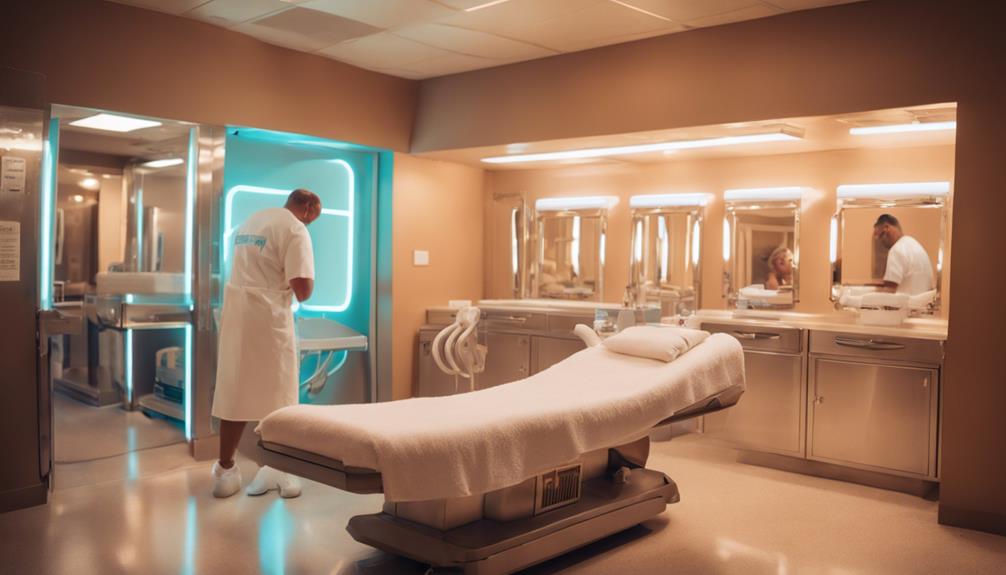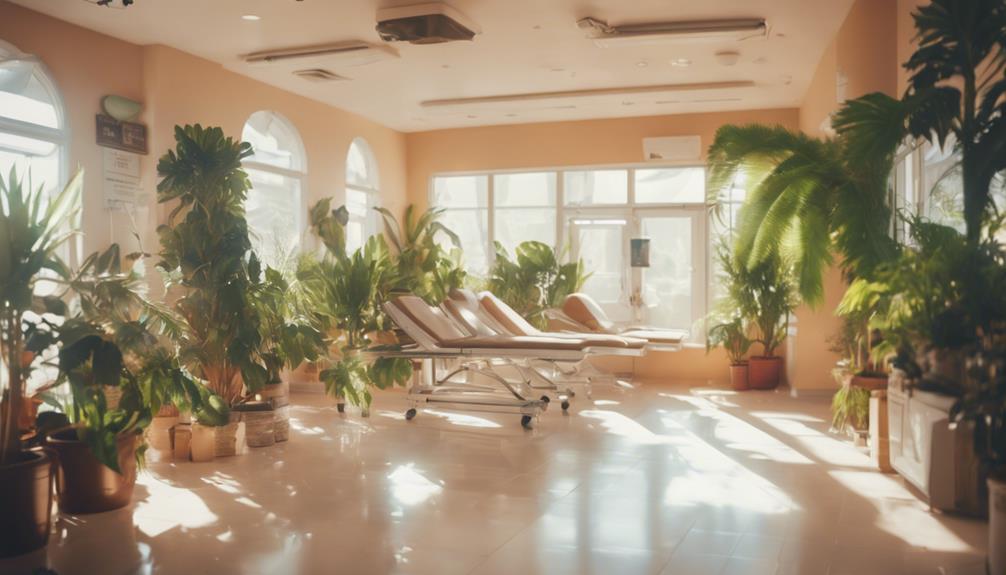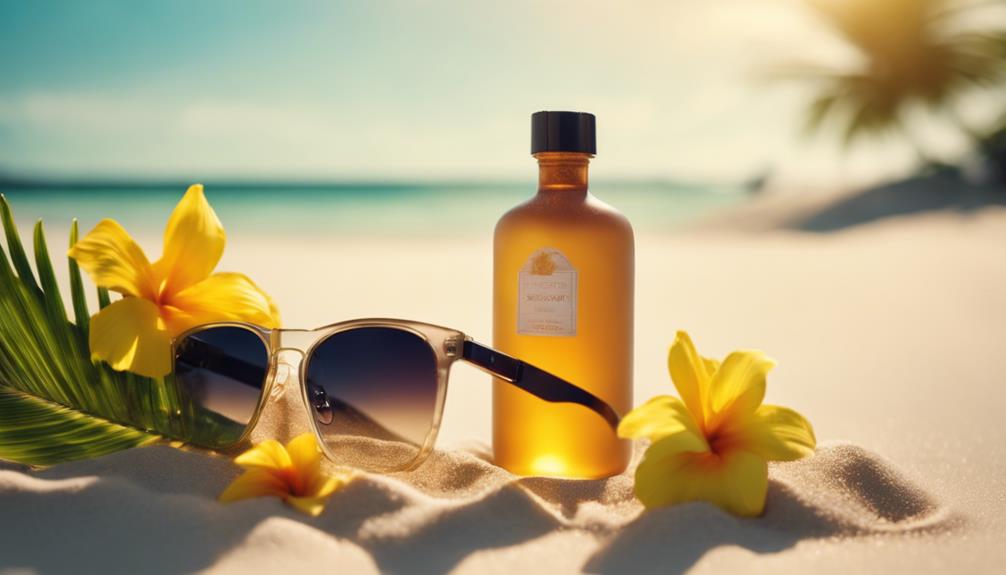Tanning salon cleanliness is crucial to ensure client safety and satisfaction. It is necessary to disinfect tanning beds and high-touch areas daily using products that are free of alcohol and ammonia. Staff members should receive thorough training to ensure they follow proper equipment maintenance and sanitation procedures. Regular inspections, deep cleaning, and keeping organized maintenance records all play a role in creating a healthy environment. Informing clients about products and post-tanning care can improve their experience. Consistent hygiene practices help build trust and create a welcoming atmosphere. For more information on successful hygiene strategies, visit the link provided to enhance the standards of your salon.
Key Takeaways
- Regularly disinfect tanning beds and equipment after each session to ensure client safety and prevent contamination.
- Implement a daily cleaning routine that includes wiping surfaces and vacuuming salon floors to maintain hygiene.
- Conduct weekly deep cleaning of tanning beds and high-touch areas with multi-surface disinfectants for thorough sanitation.
- Train staff on proper cleaning protocols and equipment maintenance to foster a culture of safety and professionalism.
Tanning Equipment Maintenance
Effective tanning equipment maintenance is critical to ensuring client safety, optimal performance, and the longevity of the salon's assets.
Regular upkeep, including cleaning and inspection, is essential for peak functionality. Establish a daily routine for cleaning all tanning devices, ensuring airbrush guns are emptied and disinfected after each use. Employ gentle, non-damaging cleaners, and perform deep cleaning of tanning beds weekly.
Additionally, regular inspection of UV lamps is crucial; look for signs of wear, such as discoloration or dark spots, and maintain secure connections. Keeping detailed maintenance records allows for tracking of equipment performance and lifespan, enabling timely interventions.
Disinfecting Tanning Beds
Thoroughly disinfecting tanning beds after each client is essential to maintain a hygienic environment and guarantee the safety of all patrons. Proper disinfection protocols involve using appropriate cleaners that are both effective and gentle on surfaces. Focus on high-touch areas, ensuring that all components of the tanning bed are sanitized.
| Cleaning Step | Frequency | Recommended Products |
|---|---|---|
| Disinfect bed surface | After each session | Alcohol-free disinfectant |
| Clean handles | After each session | Ammonia-free cleaner |
| Deep clean | Weekly | Multi-surface disinfectant |
| Vacuuming | Monthly | HEPA filter vacuum |
Staff Training Importance

Staff training plays an essential role in ensuring the safe operation of tanning equipment and maintaining high hygiene standards within the salon.
Extensive training programs equip staff with the knowledge necessary to operate and maintain equipment according to manufacturer guidelines. This training helps prevent malfunctions and promotes a culture of safety and cleanliness.
Regular updates on new technologies and procedures keep staff informed and engaged, improving overall service quality. By understanding proper cleaning protocols and the importance of hygiene, trained staff can effectively contribute to a sanitized environment, thereby enhancing the client experience.
Ultimately, investing in staff training not only fosters professionalism but also builds client trust, ensuring repeat business and a positive reputation for the salon.
Client Education on Products
Educating clients about tanning products is a key aspect of enhancing their overall experience and ensuring they achieve ideal results while maintaining skin health.
By informing clients about the various types of bronzers, moisturizers, and self-tanners available, salons can help them make informed choices that align with their skin type and desired outcomes.
Additionally, providing guidance on proper application techniques and the importance of post-tanning care, such as hydration and sunscreen usage, can greatly improve the longevity and appearance of their tan.
Regularly updating clients on new products and trends fosters trust and encourages them to seek professional advice, ultimately contributing to a positive salon experience and promoting healthy tanning practices.
Daily Salon Hygiene Practices

Implementing daily salon hygiene practices is essential for maintaining a clean and safe environment for clients and staff alike.
Each day, salon surfaces should be wiped down with appropriate disinfectants after each use, paying special attention to high-touch areas. Tanning beds must be thoroughly disinfected post-session, guaranteeing all handles and control panels are sanitized.
Regular sweeping and debris removal from salon floors contribute to an immaculate atmosphere. Additionally, airbrush guns should be cleaned after each use to prevent clogs and guarantee peak performance.
Weekly deep cleaning of equipment and surfaces should be scheduled to maintain high hygiene standards.
These consistent practices not only enhance client safety but also foster a welcoming ambiance that encourages repeat visits.
Preventive Maintenance Strategies
Regular preventive maintenance strategies are essential for guaranteeing the longevity and peak performance of tanning equipment, thereby enhancing both client safety and satisfaction.
Key practices include daily cleaning of tanning beds and airbrush guns, as well as routine inspections of UV lamps to identify wear or damage.
Implementing a structured schedule for deep cleaning, including weekly and monthly tasks, helps maintain hygiene standards.
Additionally, staff should be trained to recognize early signs of equipment malfunction, allowing for timely professional intervention.
Prioritizing filter maintenance and prompt replacements further guarantees superior air quality and equipment functionality.
Maintenance Records Management

Effective maintenance records management is essential for tracking the upkeep and performance of tanning equipment, guaranteeing timely interventions and ideal client safety.
Maintaining organized records of all maintenance activities—such as filter replacements, bulb repairs, and cleaning schedules—provides valuable insights into equipment longevity and performance.
Regularly updating these records allows salon operators to identify patterns, facilitating preventive measures that optimize equipment functioning.
Additionally, documenting maintenance can aid in compliance with health regulations and boost client confidence in salon hygiene standards.
Enhancing Client Experience
Creating a positive client experience in a tanning salon involves a combination of high-quality equipment, knowledgeable staff, and personalized service that addresses individual client needs and preferences.
By implementing tailored approaches, salons can considerably enhance satisfaction and loyalty.
- Personalized Consultations: Offer one-on-one consultations to assess skin types and tanning goals, ensuring clients receive customized advice on products and sessions.
- Comfortable Environment: Maintain a clean, welcoming atmosphere with comfortable seating and soothing décor to make clients feel relaxed during their visit.
These practices not only enhance client experiences but also foster a sense of community and trust within the salon.
What Precautions Should I Take for Tanning Salon Hygiene Before I Begin Tanning?
Before you timing for tanning begin, it’s essential to ensure the tanning salon maintains proper hygiene. Check if they provide clean towels and sanitized eyewear. Ask about their cleaning procedures for tanning beds and surfaces. Make sure the staff follows strict hygiene practices to prevent any infections or skin irritations.
Conclusion
Maintaining stringent hygiene standards in tanning salons is essential for client safety and satisfaction.
A staggering 80% of clients prioritize cleanliness when selecting a tanning salon, underscoring the significance of effective maintenance and staff training.
Implementing thorough cleaning protocols, educating clients on safe tanning practices, and ensuring regular equipment maintenance contribute to a pristine environment that fosters trust and enhances overall client experience.
Ultimately, prioritizing hygiene is not only a best practice but also a competitive advantage in the tanning industry.










